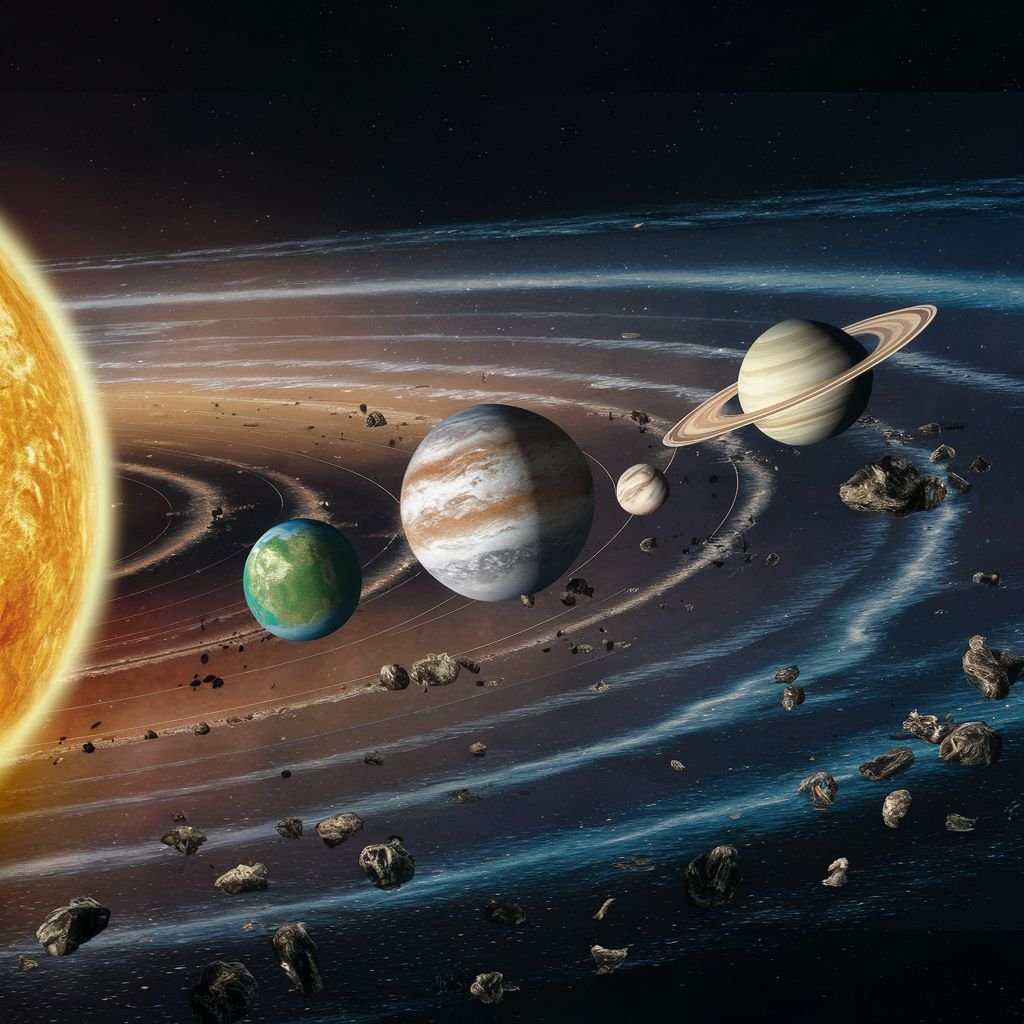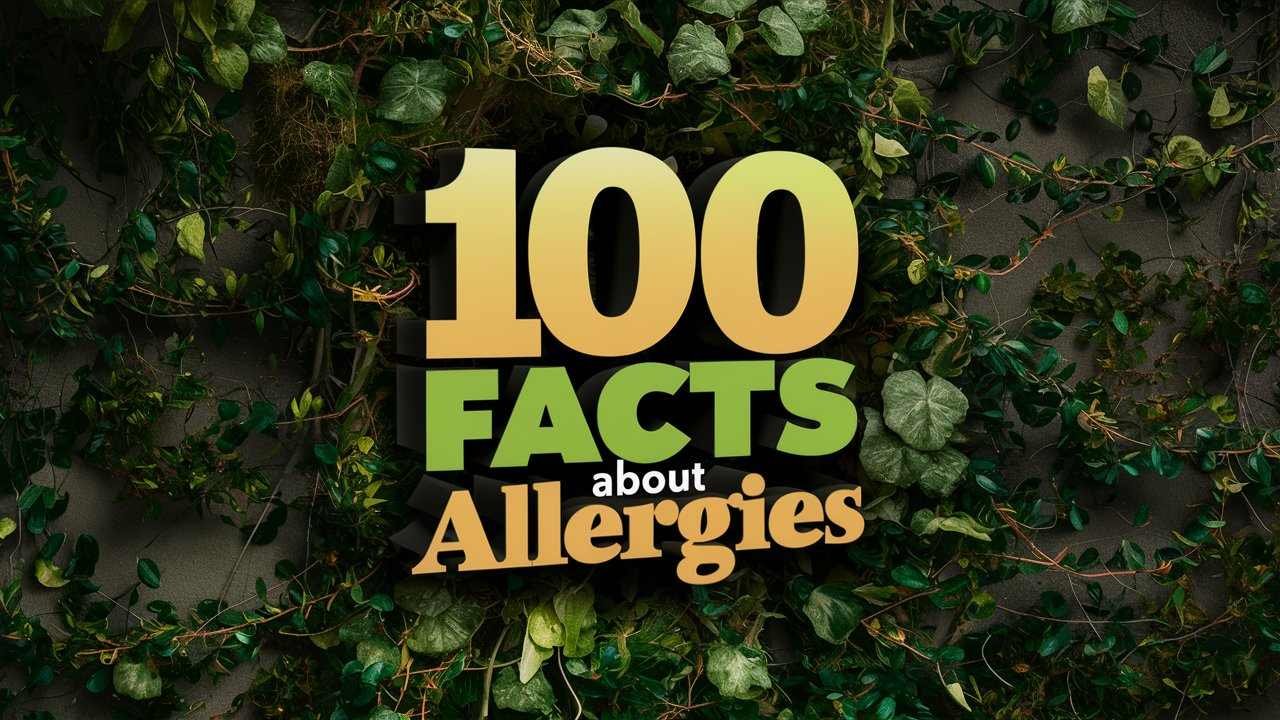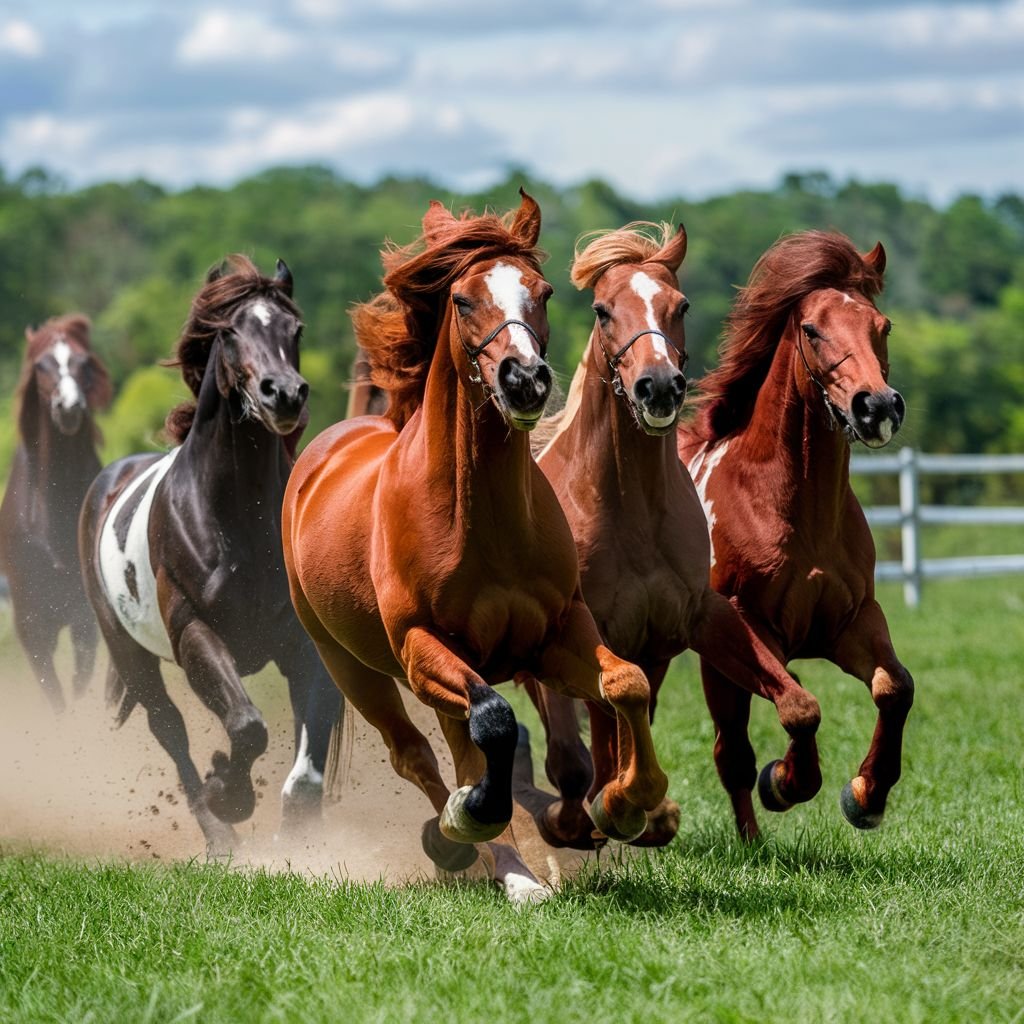Embark on a botanical adventure through the leafy, green world of plants, discovering hidden gems and quirky facts that’ll make you view your leafy friends in a whole new light. So, grab a brew, and let’s dig into the verdant unknown with 100 plant facts and thingies that might just blow your petals off!
Plants offer an endless source of fascination, from their evolutionary adaptations to their ecological importance. They remind us of nature’s resilience, beauty, and, at times, its sense of humor. So, here’s to the green, the grand, and the slightly bizarre members of the plant kingdom, teaching us to look closer and appreciate the wonders under our noses—or feet!
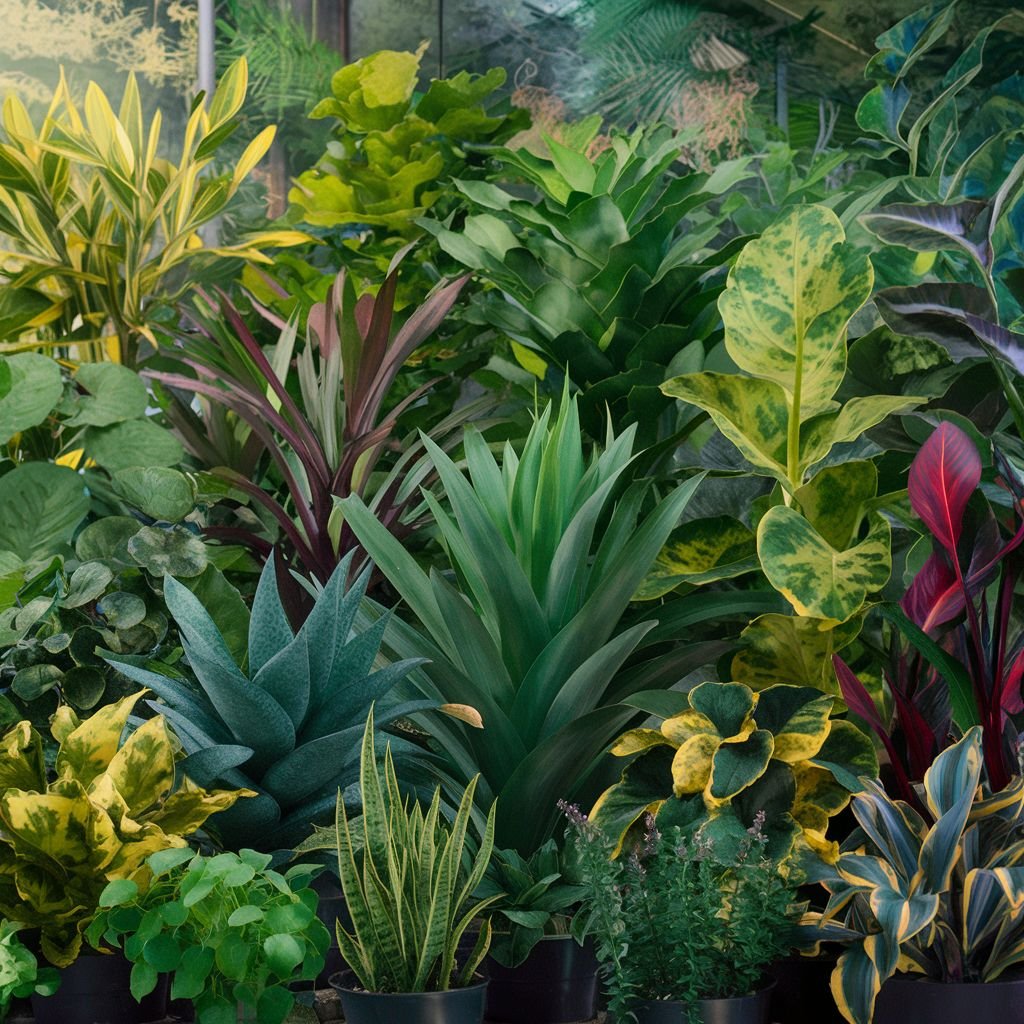
1. The Plant That Plays Dead
The Sensitive Plant (Mimosa pudica) is quite the drama queen. Touch it, and it plays dead by folding up its leaves, only to come back to life minutes later.
2. Dancing Trees
Did you know trees can “dance”? The Crooked Forest in Poland is full of pine trees with a 90-degree bend at their base, making it look like they’re grooving to their own tune.
3. Oxygen Factories at Night
While most plants take a break from producing oxygen at night, opting for some respiration instead, succulents keep pumping out the good stuff 24/7, making them great bedroom companions.
4. The Oldest Living Plant Clones
The King’s Holly (Lomatia tasmanica) in Tasmania has been cloning itself for over 43,000 years. Talk about sticking to what works!
5. Plants That Love a Good Chat
Studies have shown that plants can “hear” running water and will grow towards the sound. Next time, maybe play them your favorite playlist; who knows what will happen?
6. The Never-Ending Blossom
There’s a plant in Indonesia, the Amorphophallus titanium, also known as the “corpse flower” for its delightful aroma of decaying flesh, which blooms for just 48 hours every few decades. Catch it if you can!
7. Bamboo: The Speedy Gonzales of Plants
Bamboo is the Usain Bolt of the plant world, capable of growing up to 35 inches in a single day. Talk about a growth spurt!
8. Carnivorous Creepers
Venus Flytraps are just the tip of the carnivorous plant iceberg. There are over 600 different types of plants that prefer their meals winged or crawling.
9. The Plant That Lives in a Rock
Lithops, also known as “living stones,” are succulents that blend into their rocky surroundings so well, you might just step on them.
10. The Immortal Jellyfish Plant
The Welwitschia mirabilis, found in the Namib desert, can live for over 1,000 years, surviving on just fog and dew. It’s basically the immortal jellyfish of the plant kingdom.
11. A Symphony of Plant Growth
Plants don’t just grow; they do it with a soundtrack. When under stress, plants can emit ultrasonic “clicks” detectable by bats and possibly other plants and animals.
12. Flowers That Play With Fire
Some plants, like certain species of eucalyptus, need fire to germinate. Their seeds can lie dormant for years until a wildfire triggers them to sprout.
13. The Color-Changing Marvel
The hydrangea’s color isn’t fixed; it changes based on the soil’s pH level. So, if you want to play color god, just tweak the soil acidity.
14. The Original Painkiller
The willow tree’s bark was the original source of aspirin. Before we had pills, chewing on willow bark was the way to go for pain relief.
15. The World’s Smelliest Flower
The Titan Arum, aside from being one of the largest flower structures, also wins the prize for the world’s smelliest, earning its nickname “corpse flower.”
16. Plants That Can Count
The Venus Flytrap keeps count of how many times an insect touches its hair triggers before closing shut. Talk about picky eaters!
17. Caffeine as an Insecticide
Coffee plants use caffeine as a natural defense mechanism against pests. It’s toxic to bugs and also inhibits competing plants’ growth around them.
18. The Desert Bloomer
The “Queen of the Night” cactus flower blooms only once a year, and its flowers wilt before dawn. It’s the ultimate “blink and you’ll miss it” bloom.
19. Tomato Plants’ Sibling Rivalry
Tomato plants can be pretty ruthless. When a sibling plant is struggling, they’ll release more chemicals into the ground to inhibit their sibling’s growth and reduce competition.
20. The Tickle-Me Plant
Similar to the Sensitive Plant, the Tickle-Me Plant (Mimosa pudica) folds its leaves when tickled or touched. It’s nature’s version of playing coy.
21. Sunflowers Are Sun Chasers
Sunflowers exhibit a behavior known as heliotropism. Young blossoms will face east at dawn and follow the sun as it moves to the west, resetting at night.
22. Algae: The World’s Oldest Plants
Algae are among Earth’s oldest forms of life, with fossils dating back over 3 billion years. They’re the granddaddies of the plant kingdom.
23. Orchids: The Masters of Disguise
Some orchid species mimic the appearance and scent of female bees or wasps to attract male pollinators in one of nature’s most deceptive matchmaking services.
24. The Plant That Thrives on Metal
The Alyssum murale, a metal hyperaccumulator, can thrive in soil with high concentrations of nickel, absorbing the metal into its tissues without harm.
25. Cacti Can Collect Water from Fog
Some cacti species have evolved to collect water directly from fog, using their spines, demonstrating nature’s ingenuity in the most arid environments.
26. Plants That Sweat
Transpiration in plants is akin to sweating in humans. It’s their way of cooling down and involves releasing water vapor through their leaves.
27. The Chocolate Midas
The cacao tree’s seeds were so valuable to the ancient Mayans that they were used as currency. Talk about chocolate gold!
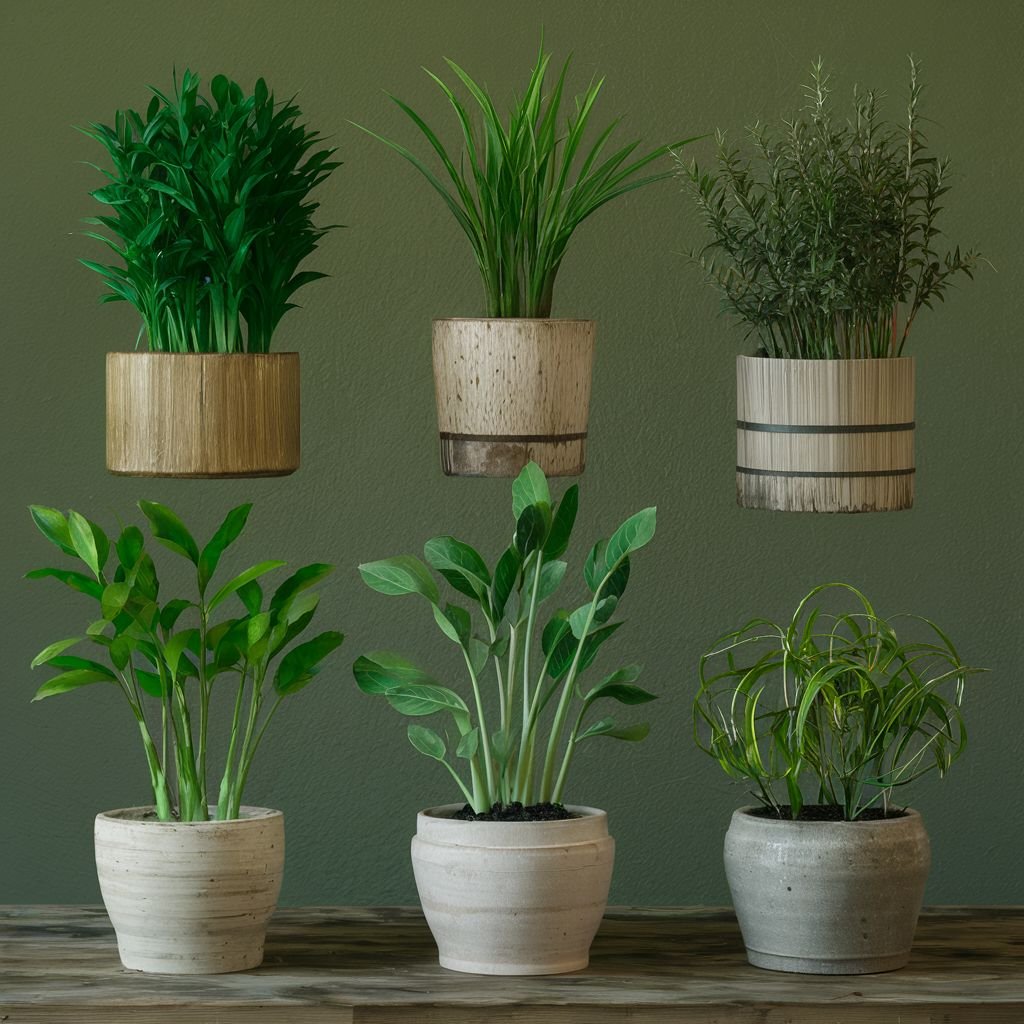
28. Peanuts Are Not Nuts
Surprise! Peanuts are actually legumes, more closely related to peas and lentils than to actual nuts. They grow underground, not on trees.
29. The Wandering Plant
The Walking Palm of Central and South America can literally “walk” by growing new roots toward the light and letting old ones die, inching its way through the forest.
30. Seaweed: Not Always a Weed
Seaweed isn’t actually a weed but a type of algae. It plays a crucial role in marine ecosystems and is a powerhouse of nutrients.
31. Plants With a Need for Speed
The White Mulberry tree’s pollen is one of the fastest moving organisms, ejected at half the speed of sound. Talk about going off with a bang!
32. The Plant Kingdom’s Living Fossils
Ginkgo biloba trees are considered living fossils, unchanged for over 250 million years. They witnessed the dinosaurs’ rise and fall.
33. The Air Cleaning Champions
NASA’s Clean Air Study found that certain houseplants, like the spider plant and peace lily, can significantly purify indoor air, removing toxins like formaldehyde.
34. The Desert’s Ice Cream Plant
The Saguaro Cactus fruit, known as the “desert’s ice cream,” is a refreshing treat that’s been enjoyed by the Native American Tohono O’odham people for centuries.
35. The Tallest Flowering Plant
The Australian Mountain Ash (Eucalyptus regnans) holds the title for the tallest flowering plant, with some specimens reaching over 330 feet tall.
36. Nature’s Litmus Test
Hydrangea flowers can change color based on the soil’s pH level – from pink in alkaline to blue in acidic conditions, acting as nature’s own litmus test.
37. Avocado: The Aztec Symbol of Love
The Aztecs considered avocados as symbols of love and fertility because they grow in pairs on trees. Plus, their name comes from the Nahuatl word for “testicle.”
38. The Fiery Dragon Blood Tree
The Dragon Blood Tree, native to Socotra, Yemen, gets its name from the red sap it exudes when cut, which was historically used in alchemy and magic.
39. The Quaking Aspen’s Underground Empire
A single Quaking Aspen in Utah, named Pando, is considered the world’s largest organism by mass, connected by a single root system over 106 acres.
40. The Rafflesia: A Parasitic Giant
The Rafflesia arnoldii, found in Southeast Asia, is the world’s largest flower, reaching up to 3 feet in diameter and known for its smell of decaying flesh.
41. The “Immortal” Jellyfish Plant
Turritopsis dohrnii, often dubbed the “immortal jellyfish” for its ability to revert to its juvenile form after maturing, shares a concept with plants like the Welwitschia mirabilis, which can live for over a thousand years, showcasing nature’s fascinating take on longevity and rebirth.
42. Coffee’s Protective Caffeine
Just as caffeine keeps humans awake, it serves as a natural pesticide for the coffee plant, protecting it from insects. This clever adaptation ensures the survival and proliferation of one of the world’s favorite beverages.
43. The Venus Flytrap’s “Counting” Mechanism
This carnivorous plant can count the number of times its prey touches its sensors before snapping shut, an astonishing display of botanical intelligence that ensures it expends energy only on worthwhile meals.
44. The Plant That Eats Rats
The giant montane pitcher plant of Borneo is large enough to digest rats. Its size and the digestive fluid it produces allow it to tackle much larger prey than the average insect-eating plant.
45. Bananas Are Berries, But Strawberries Aren’t
In a botanical twist, bananas qualify as berries according to scientific classification, whereas strawberries do not. This surprising fact often flips our common understanding of fruit categories.
46. The Corpse Flower’s Rare Bloom
The Titan Arum or “corpse flower” is not only notorious for its pungent smell but also for its infrequent blooming cycle, sometimes going decades between displays, making each bloom a rare and stinky spectacle.
47. Bamboo: The Plant of 1,000 Uses
Bamboo is incredibly versatile, used in construction, clothing, food, and even as a sustainable alternative to plastic. Its fast growth and strong fibers make it a renewable resource champion.
48. The Self-Cleaning Lotus Effect
The lotus flower is famous for its self-cleaning leaves, which have a microscopic structure that repels dirt and water. This effect, known as the lotus effect, has inspired various technological advancements in water-repellent materials.
49. Plants That Can “See”
Some plants, like the Mimosa pudica, can change their behavior based on the amount of light, effectively “seeing” their environment in a way that influences their growth and survival strategies.
50. Moss: The Earth’s Natural Air Conditioner
Mosses can store large amounts of moisture, which helps cool the air in their vicinity through evaporation, acting as nature’s air conditioners and playing a critical role in urban heat reduction.
51. The Language of Flowers
In Victorian England, flowers were used to convey secret messages, with each bloom representing different emotions or sentiments. This “language of flowers” allowed people to express feelings that societal norms of the time made difficult to say out loud.
52. The Healing Power of Plants
Many modern medicines are derived from plants, such as aspirin from willow bark and quinine from the cinchona tree. Plants have been the basis for medical treatments through much of human history, highlighting their importance in healing and health.
53. The World’s Smallest Fruit
The Wolffia globosa, a type of watermeal, produces the world’s smallest fruit, barely visible to the naked eye. This tiny plant is evidence of nature’s ability to thrive in even the smallest of forms.
54. The Fire-Dependent Giant Sequoia
Giant sequoias depend on fire for their seeds to germinate. Fire helps clear out competing vegetation and releases the seeds from their cones, ensuring the continuation of these majestic trees.
55. The Colorful World of Hydrangeas
Hydrangeas can change color from pink to blue based on the aluminum ion content in the soil, a vivid example of how environmental factors can influence plant physiology and bloom color.
56. The Sahara Desert: Once a Tropical Rainforest
Fossil evidence suggests that the Sahara Desert was once lush with tropical rainforests. Climate shifts and plant adaptations highlight the dynamic history of Earth’s flora.
57. Orchids: The Masters of Mimicry
Some orchid species have evolved to mimic the appearance and smell of female insects to attract male pollinators, showcasing the intricate relationships between plants and their pollinators.
58. The Protective Role of Thorns
Thorns are not just defensive mechanisms against herbivores but can also provide shade, reduce water loss, and even help the plant climb towards sunlight, demonstrating the multifunctionality of plant adaptations.
59. The Signal Power of Flowers
Flowers are not just for show; they serve as signals to pollinators, guiding them to the nectar with their colors, patterns, and scents, ensuring the plant’s reproductive success.
60. The Ancient Art of Bonsai
The art of bonsai involves cultivating miniature trees that mimic the shape and scale of full-size trees. This centuries-old practice showcases humans’ deep connection and fascination with the plant world.
61. The Whispering Giants: How Trees Communicate
Trees can communicate and defend each other through underground fungal networks, often called the “Wood Wide Web.” They can send nutrients to struggling trees and even warn neighbors of pest attacks.
62. Cinnamon: Bark Worth More Than Gold
Cinnamon, once considered more valuable than gold, is harvested from the inner bark of Cinnamomum trees, highlighting the historical importance and value of spices derived from plants.
63. The Gravity-Defying Capabilities of Climbing Plants
Climbing plants like ivy use tiny tendrils that can sense gravity and light, allowing them to reach towards structures and climb upwards, showcasing an incredible adaptation to maximize sunlight exposure.
64. Plants Can Get Sunburned Too
Just like humans, plants can suffer from sunburn. Leaves can scorch and bleach out when exposed to too much direct sunlight, underscoring the delicate balance plants maintain with their environment.
65. The Plant That Can Live Without Water for Years
The resurrection plant can survive extreme dehydration for years. Once it encounters water, it “comes back to life,” unfurling from a brown, dried clump to a green, thriving plant.
66. The Deadly Beauty of the Oleander
The oleander is one of the most toxic plants in the world, with every part of the plant containing toxins that can be fatal if ingested, a stark reminder of nature’s dual capacity for beauty and danger.
67. The Musical Fruit: The Magic Beans of the Symphony Tree
The seeds of the Carob tree, once used as measures for precious stones, are so consistently sized they gave us the term “carat.” They’re also called “St. John’s bread” or “locust bean,” having supposedly sustained John the Baptist in the wilderness.
68. Aloe Vera: The Plant of Immortality
Aloe vera, known as the “plant of immortality” in ancient Egypt, was used for its healing properties and as a gift to deceased pharaohs, highlighting the long-standing recognition of plants’ medicinal qualities.
69. The Psychological Benefits of Houseplants
Studies have shown that having houseplants can reduce stress, improve mood, and even enhance productivity, making them not just decorative but essential for well-being.
70. Peat Bogs: Time Capsules of the Plant World
Peat bogs can preserve plants for thousands of years, acting as natural time capsules. They provide valuable insights into past climates and ecosystems, thanks to the antiseptic and preservative properties of peat.
71. The “Fossil Fuel” Plants
Coal, oil, and natural gas are essentially ancient plants transformed by pressure and time. These “fossil fuels” are the remains of vast prehistoric forests and algae, capturing solar energy over millions of years.
72. The Self-Sacrificing Altruism of Creosote Bushes
Creosote bushes in the Mojave Desert release toxins into the soil to prevent other plants from growing too close, ensuring their own survival but also regulating the ecosystem by preventing overcrowding.
73. The Saffron Enigma
Saffron, the world’s most expensive spice by weight, is derived from the crocus flower’s stigmas. It takes about 75,000 flowers to produce just a single pound of saffron spice.
74. The Dandelion’s Airborne Seeds
A dandelion seed can travel up to 5 miles from its parent plant. Its parachute-like structure is a marvel of natural engineering, designed to disperse its seeds as widely as possible.
75. The Secret Life of Soil
Soil is teeming with life, containing more microorganisms in a teaspoon than there are people on Earth. This biodiversity is crucial for plant health and nutrient cycling.
76. The Powerhouse Pollinators: Bees
Bees are responsible for pollinating about one-third of the food crops we consume, highlighting the intricate dependency between plants and their pollinator partners.
77. The Flammable Eucalyptus
Eucalyptus trees contain highly flammable oils in their leaves, which can intensify wildfires, showcasing the sometimes-destructive interplay between plant chemistry and environmental factors.
78. The Arctic’s Blooming Deserts
Even the harsh, cold deserts of the Arctic bloom with life during the short summer months, with plants like the Arctic poppy thriving and adding color to the tundra.
79. Plants’ Role in Medicine: The Aspirin Connection
The use of willow tree bark for pain relief dates back to ancient civilizations. This plant-based remedy laid the groundwork for developing aspirin, one of the most widely used medications today.
80. The Role of Moss in Urban Pollution Control
Moss walls in urban areas can absorb large amounts of air pollution, including particulate matter and nitrogen dioxide, acting as natural air purifiers in cities.
81. Nature’s Skyscrapers: The California Redwoods
The California redwoods are among the tallest trees in the world, with some towering over 300 feet. These botanical giants can live for over 2,000 years, standing as monuments to nature’s grandeur.
82. The Spice of Death: Nutmeg
Nutmeg, a popular holiday spice, can be deadly if ingested in large quantities. Its psychoactive properties were once a medieval hallucinogen but can lead to serious health issues in high doses.
83. The Phantom Orchid’s Ghostly Bloom
The Phantom Orchid is a rare, almost ghostly, white flower that doesn’t photosynthesize. Instead, it steals nutrients from underground fungi, blooming in shadowy forests.
84. The Language of Flowers
Victorian England was obsessed with the language of flowers, where different blooms conveyed specific messages. This floral code could communicate forbidden sentiments in a socially acceptable way.
85. The Plant That Lives in Two Worlds
Mangroves are remarkable plants that thrive at the ocean’s edge, living in both saltwater and freshwater. They protect coastlines and support marine life, showcasing incredible adaptability.
86. The Miracle Berry’s Sweet Illusion
The miracle berry contains a protein that temporarily makes sour foods taste sweet. This fascinating fruit alters taste perception, turning even the tartest lemon into a sweet delight.
87. Earth’s Oxygen Factories: The Amazon Rainforest
The Amazon Rainforest is often called the “lungs of the Earth,” producing about 20% of the world’s oxygen. This vast green expanse is critical in the fight against climate change.
88. Flowers That Bloom in the Dark
Some flowers, like the Moonflower, only bloom at night, releasing a sweet fragrance to attract nocturnal pollinators in a beautiful display of adaptation to their environment.
89. The Chili Pepper’s Heat as a Defense Mechanism
The capsaicin in chili peppers, which gives them their heat, is actually a defense mechanism against predators. This chemical discourages herbivores but, ironically, has made the chili pepper incredibly popular among humans.
90. The Arctic Seed Vault: Nature’s Backup Drive
The Global Seed Vault in Svalbard, Norway, acts as the world’s backup for plant seeds, ensuring the preservation of genetic diversity in the face of environmental changes and disasters.
91. Bioluminescent Fungi: Nature’s Nightlights
Certain fungi species emit a soft, green glow in the dark, a phenomenon known as bioluminescence. These natural nightlights create an ethereal beauty in forests and woodlands.
92. The Wandering Seeds of the Dandelion
Dandelion seeds are designed for travel. Their parachute-like structures can carry them miles away from their parent plant, spreading their lineage far and wide.
93. The Desert’s Ice Plant
The Ice Plant, common in deserts, has leaves that look like they’re covered in glistening ice crystals. These structures help the plant store water and reflect sunlight, a brilliant adaptation to extreme heat.
94. Plants’ Internal Clocks
Plants have internal clocks that help them anticipate daily rhythms, like sunrise and sunset, optimizing their processes for photosynthesis and energy conservation.
95. The Hottest Pepper in the World
The Carolina Reaper holds the title for the world’s hottest pepper, a fiery testament to human cultivation’s ability to push plants to their biochemical limits.
96. The Floating Gardens of the Amazon
The Amazon River is home to floating mats of vegetation, or “floating gardens,” that support entire ecosystems, including various plant species, insects, and small animals.
97. Orchids That Trick Their Pollinators
Some orchid species mimic the appearance and scent of female insects so accurately that male insects are fooled into trying to mate with them, ensuring pollination in a deceptive dance of nature.
98. The Curious Case of the Exploding Cucumbers
The squirting cucumber, when ripe, ejects its seeds and a stream of mucilaginous liquid with considerable force, an unusual method of seed dispersal that’s as effective as it is dramatic.
99. The Rainforest’s Pharmacy
Over 25% of modern medicines originate from plants found in rainforests, yet only a fraction of these plants have been studied for their medicinal potential, hinting at the untapped pharmacy waiting in the world’s greenest depths.
100. The Survival Strategy of the “Resurrection Plant”
The Rose of Jericho, known as the resurrection plant, can survive extreme desiccation. It curls into a ball during drought and unfurls at the slightest touch of water, a symbol of resilience and rebirth in the plant kingdom.



